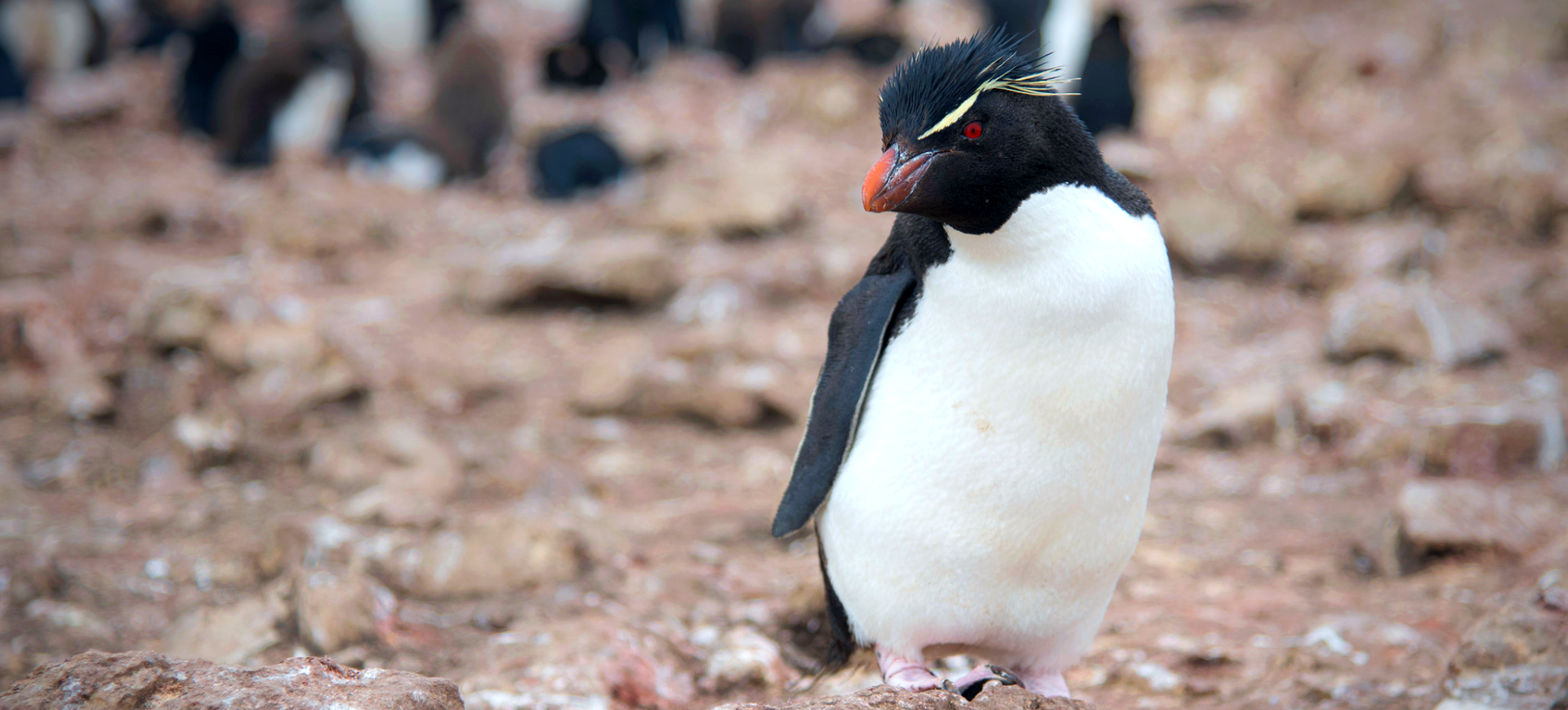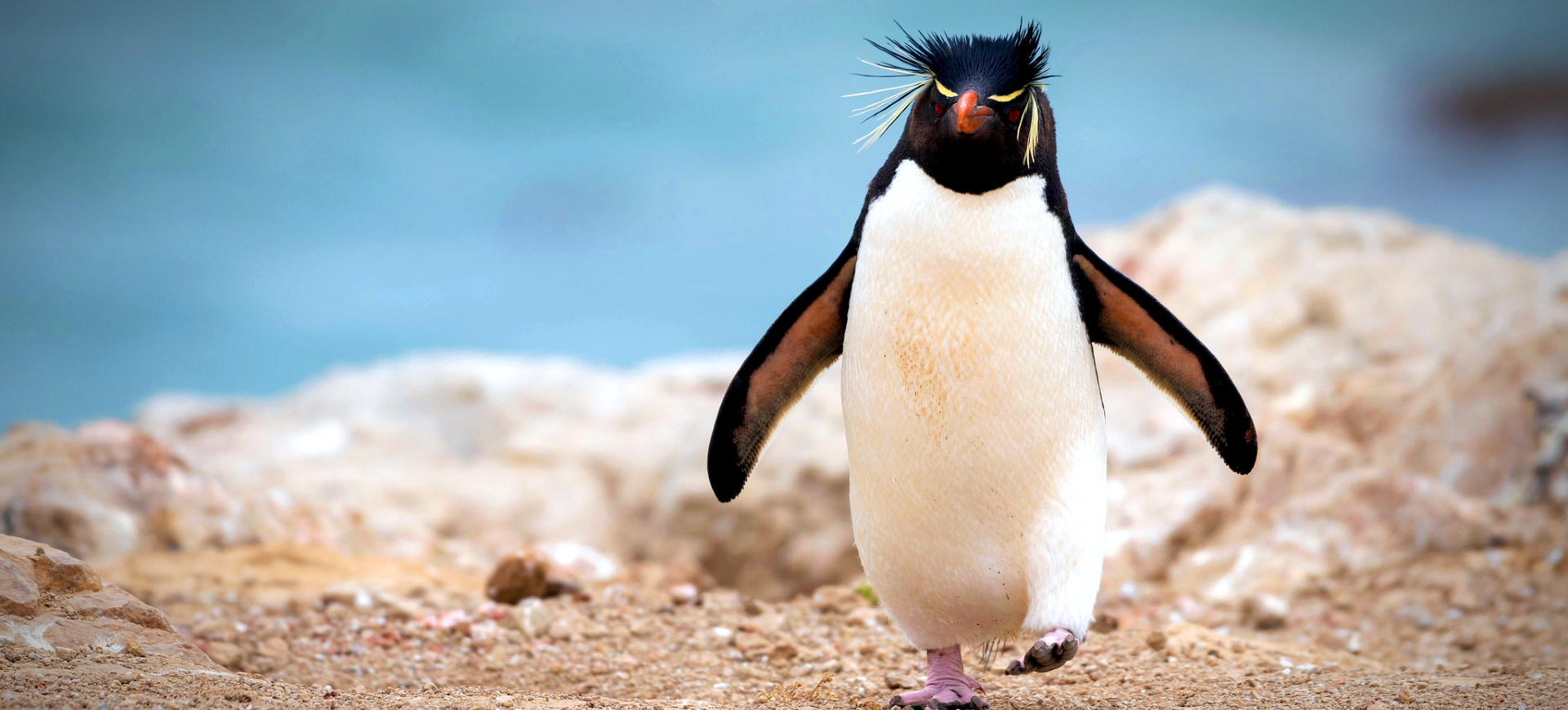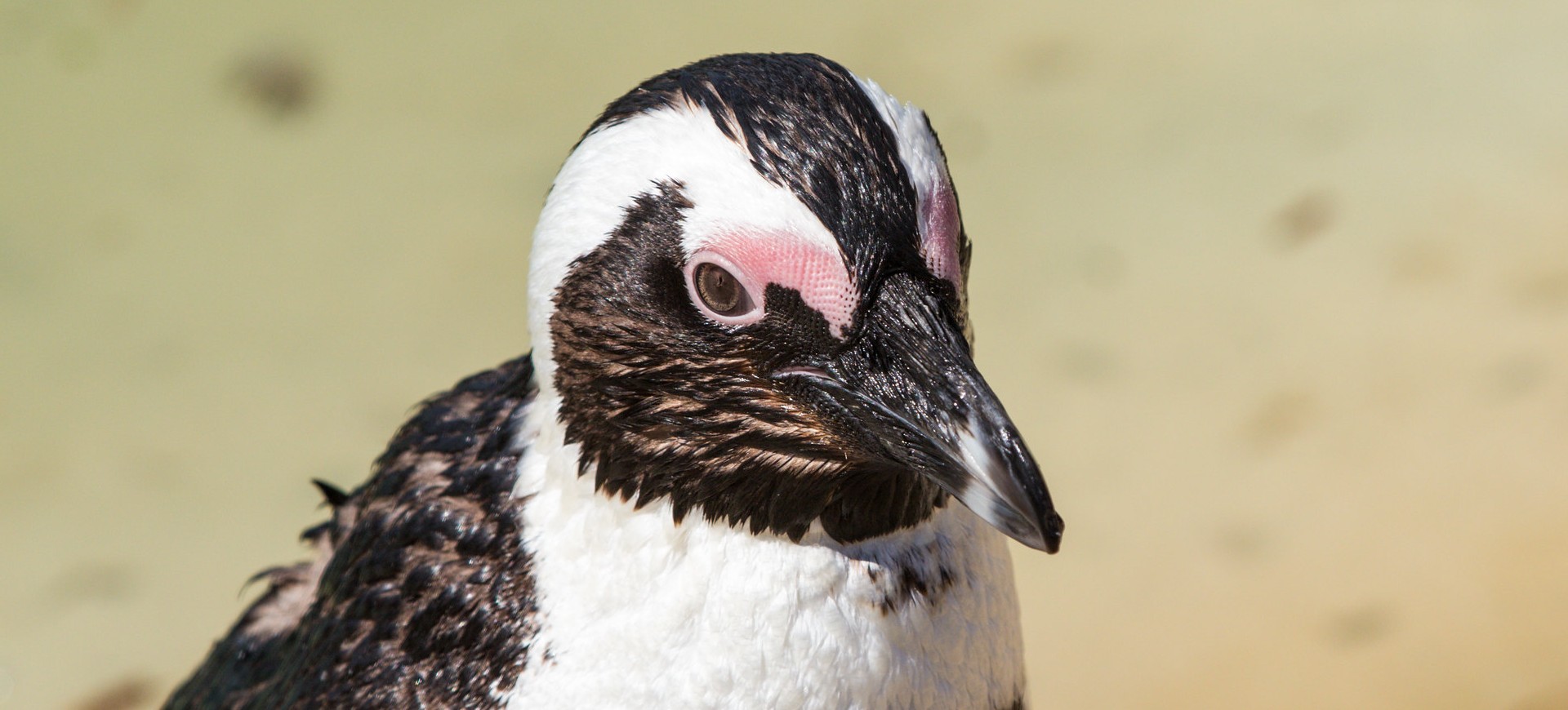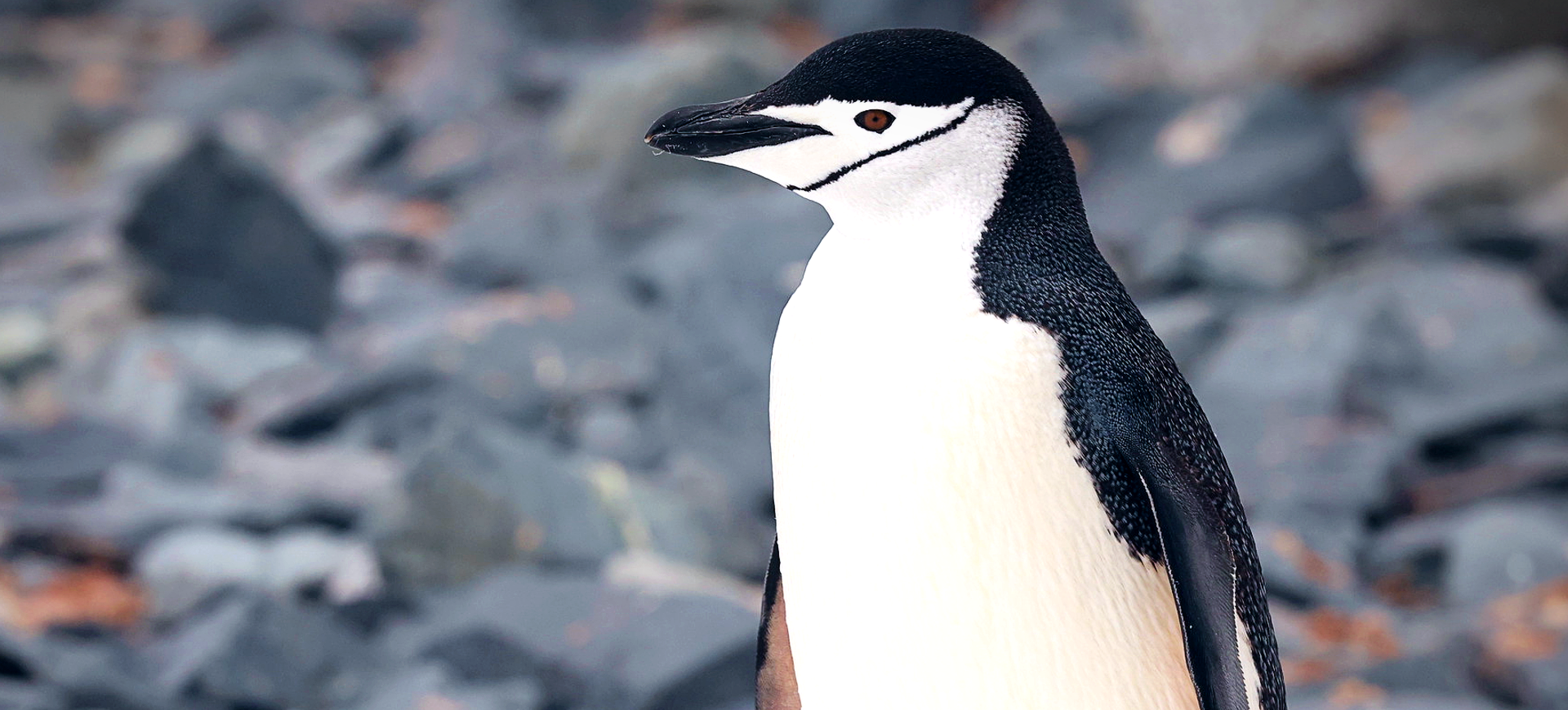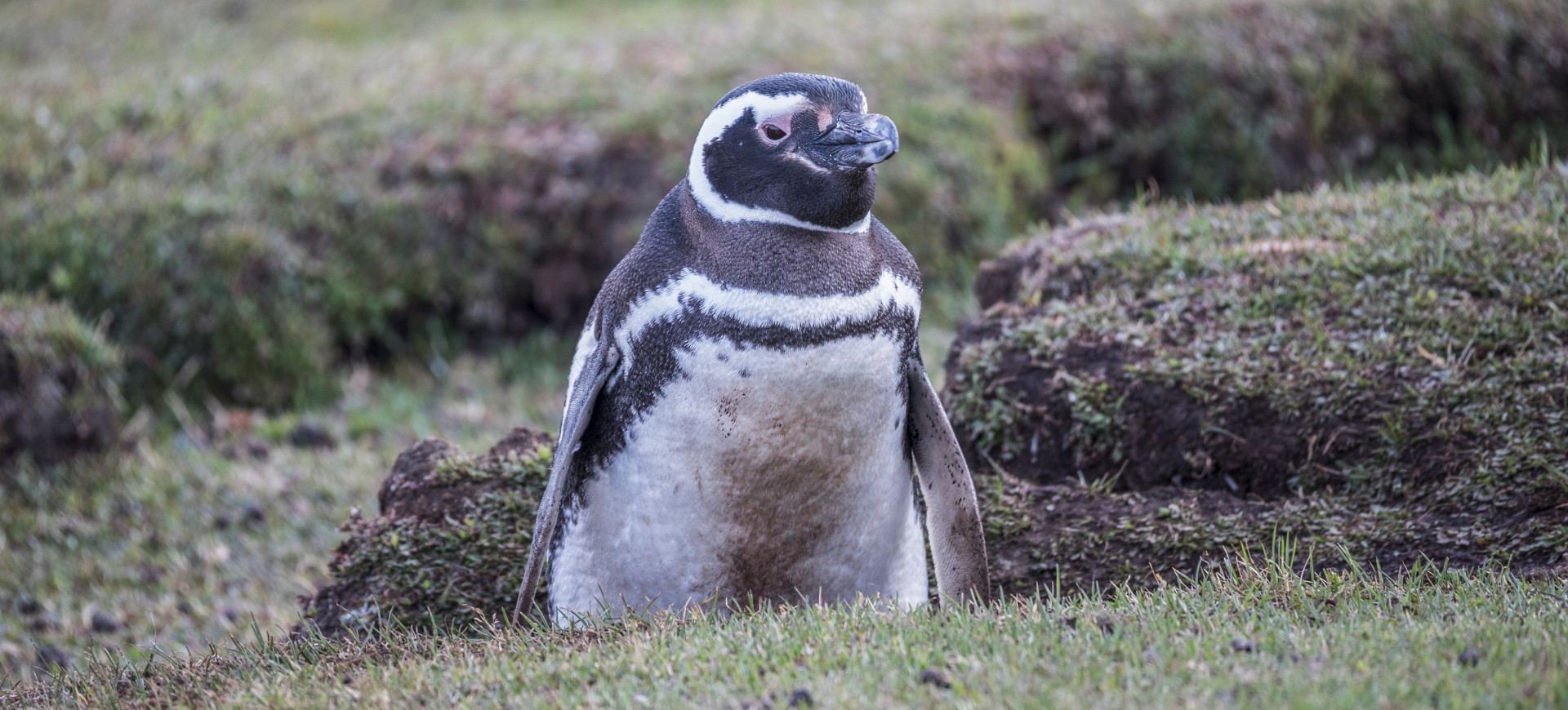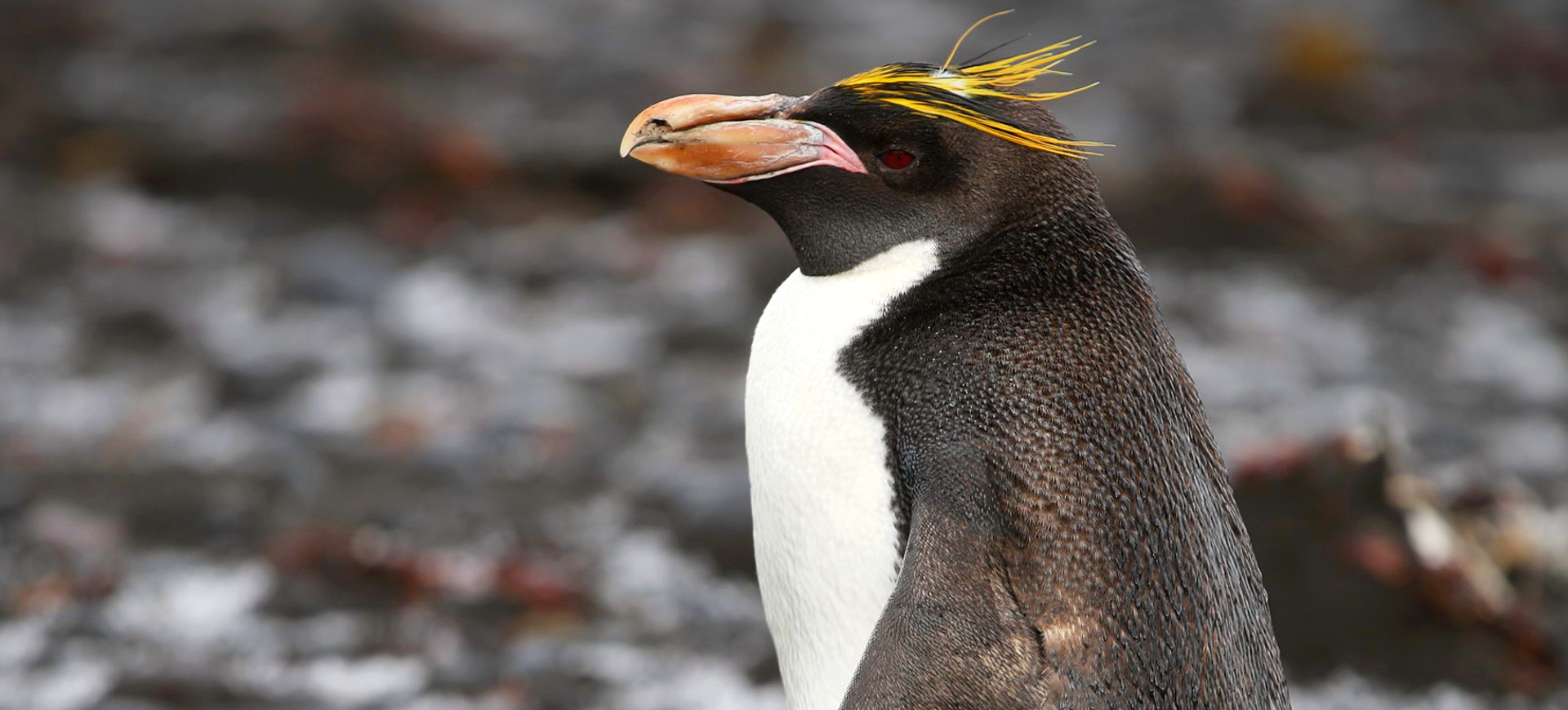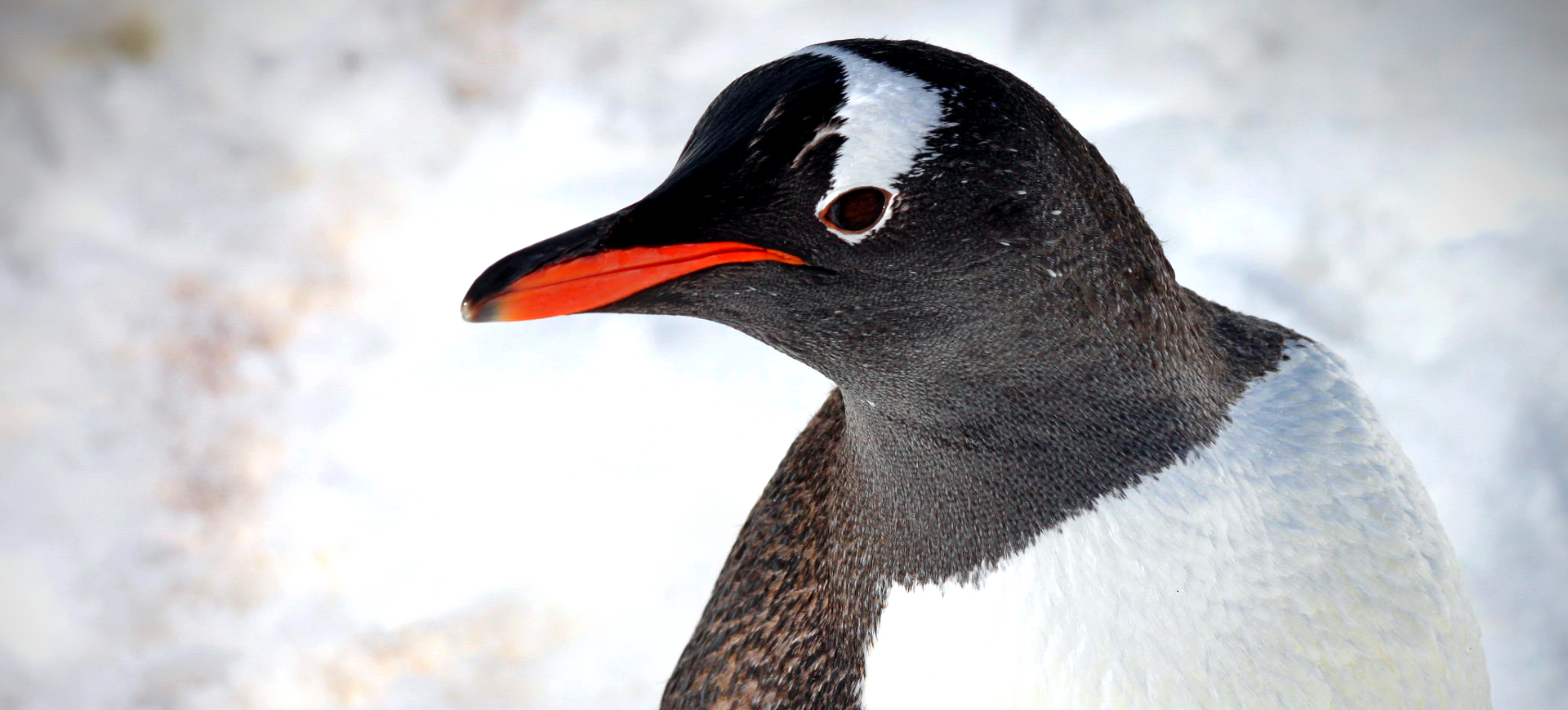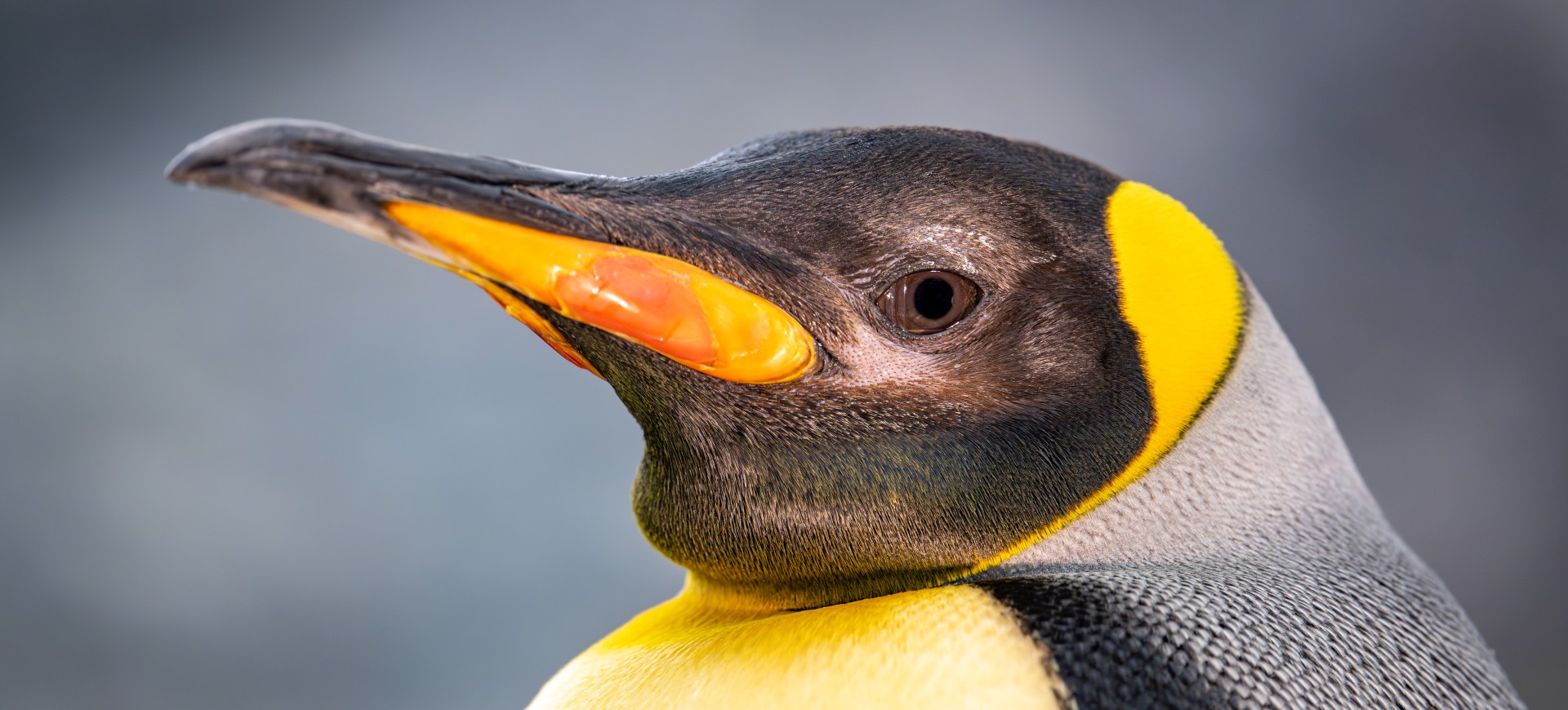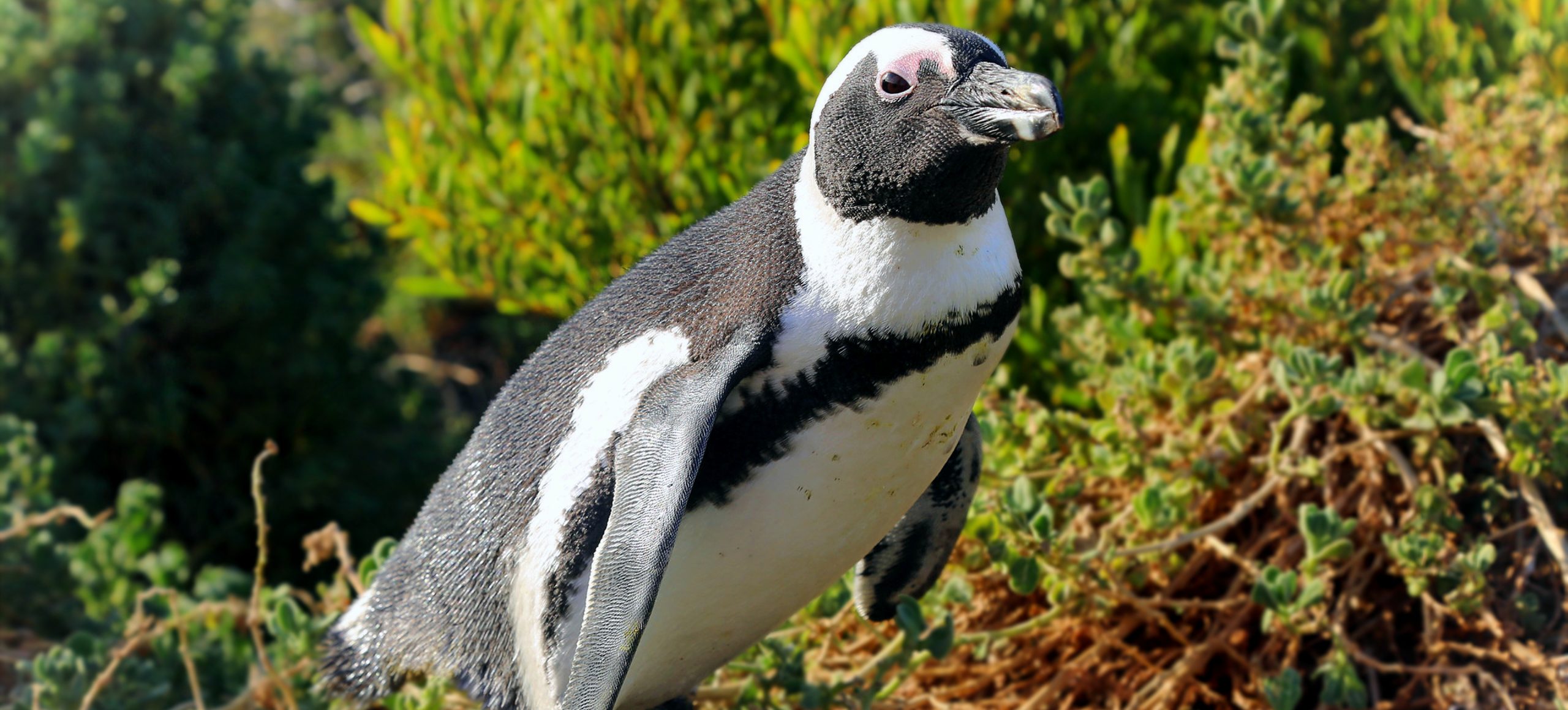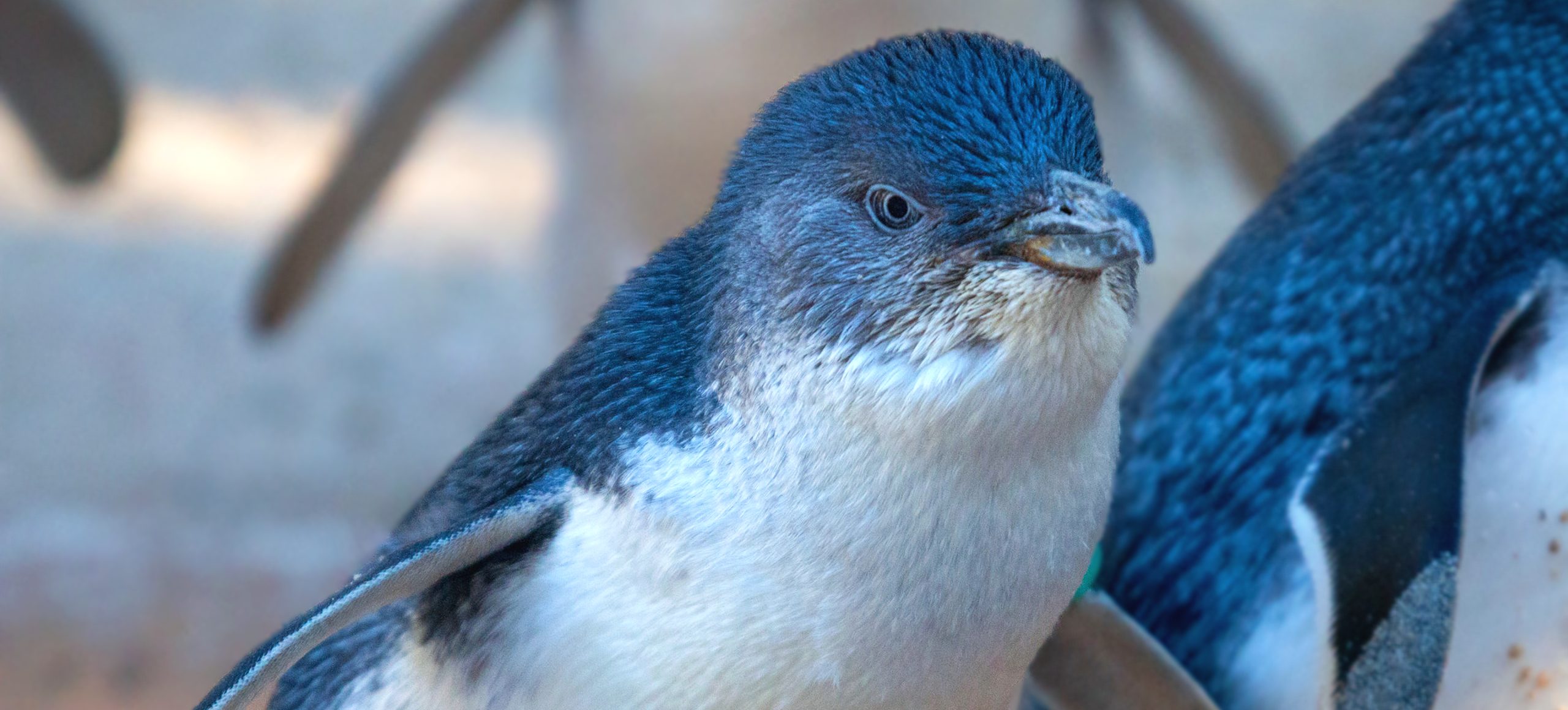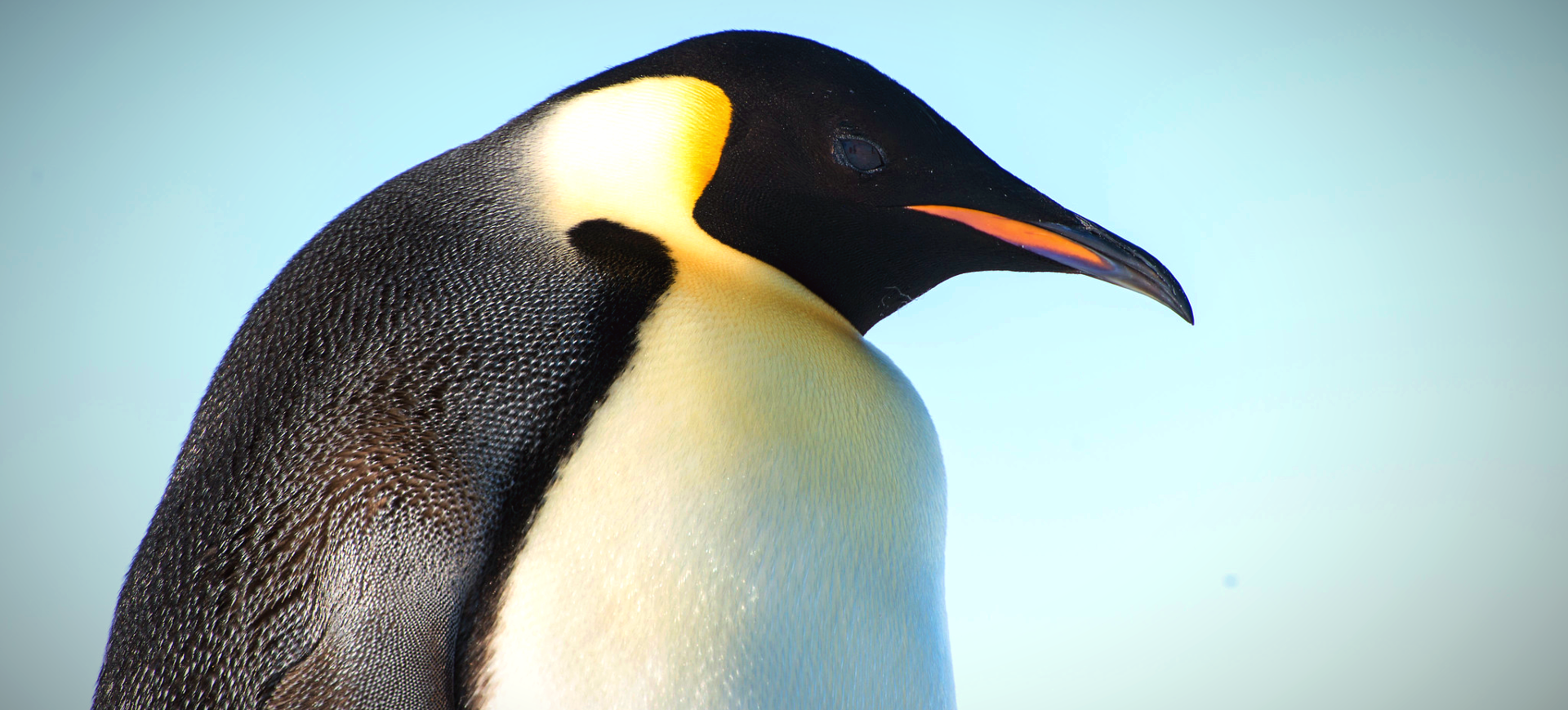Overview
Adélie Penguins are one of the most widely recognized Antarctic penguins, characterized by their classic black and white plumage and distinctive white eye rings. They are medium-sized penguins, smaller than Emperor and King Penguins but larger than Rockhopper and Chinstrap Penguins. These birds are known for their strong adaptability and resilience in one of the harshest climates on Earth. Adélie Penguins are exclusively found in Antarctica, inhabiting the entire continent and its surrounding coastal islands.
Physiologically, Adélie Penguins are perfectly adapted to their icy habitat. Their dense, waterproof feathers provide insulation against the extreme cold, and their strong, webbed feet are well-suited for navigating icy terrain. On land, they are known for their waddling gait and are skilled at ‘tobogganing,’ where they slide on their bellies across the snow. In the water, they are agile and efficient swimmers, diving deep to catch krill, fish, and squid, which form the basis of their diet.
The breeding season of the Adélie Penguin is a crucial period, during which they form large, noisy colonies on ice-free coastal areas. These colonies are a hub of activity, with parents busily feeding and protecting their chicks. Adélie Penguins build their nests from stones, and both parents share the responsibilities of incubation and chick-rearing. The social dynamics of these colonies are complex and fascinating, with strong pair bonds and cooperative behaviors being key to their breeding success.
Taxonomy
Kingdom
Phylum
Class
Order
Family
Genus
Species
Type
Current distribution:
Adélie Penguins are widely distributed around Antarctica's coast and are among the most southern-distributed of all penguin species. They are estimated to number around 5 million breeding pairs, making them one of Antarctica's most abundant penguin species. The largest colonies are on the Ross Sea, the Antarctic Peninsula, and East Antarctica.
While some populations have experienced declines due to environmental changes, others have remained stable or even increased. Climate change and its impact on sea ice and prey availability are the main concerns for the future of Adélie Penguin populations. Ongoing research and monitoring are crucial to understanding these impacts and implementing conservation measures.
Physical Description:
Adélie Penguins are easily identified by their distinctive black-and-white coloring, typical of many penguin species. They have a black back and head, a white belly, and a white ring around each eye. The bill is shorter and more pointed than other penguin species, and their feet are pink with black soles. Adults stand about 28 to 30 inches (71 to 76 cm) tall.
There is little sexual dimorphism in size between male and female Adélie Penguins. The average weight ranges from 8.5 to 12 lbs (3.9 to 5.5 kg), with some variation depending on the time of year and availability of food. Their streamlined bodies and strong flippers make them excellent swimmers, capable of reaching speeds up to 45 km/h (28 mph) in water. They often waddle or ‘toboggan’ on their bellies on land, especially when traveling over snow or ice.

Lifespan: Wild: ~15 Years || Captivity: ~20 Years

Weight: Male: 8.5-12 lbs (3.9-5.5 kg) || Female: 8-11.5 lbs (3.6-5.2 kg)

Length: Male: 28-30 in (71-76 cm) || Female: 27-29 in (68-74 cm)

Height: Male: 28-30 in (71-76 cm) || Female: 27-29 in (68-74 cm)

Top Speed: 28 mph (45 km/h)
Characteristic:
Native Habitat:
Adélie Penguins are found exclusively in Antarctica, where they inhabit the entire coastline of the continent. They prefer rocky, ice-free breeding areas, typically located near abundant food sources in the surrounding ocean. These areas provide the conditions for nesting, molting, and social interactions. The harsh Antarctic environment poses significant challenges, but Adélie Penguins are well-adapted to these conditions.
Their habitat ranges from the high-Antarctic coastline to the more temperate sub-Antarctic regions. During the non-breeding season, Adélie Penguins spend most of their time at sea, where they can cover vast distances in search of food. Their ability to thrive in such a remote and challenging environment is a testament to their adaptability and resilience.
WWF Biomes:
Biogeographical Realms:
Continents:
Countries:
Diet:
Diet & Feeding Habits:
Adélie Penguins primarily feed on Antarctic krill, though their diet also includes small fish and squid. They are exceptional divers, capable of reaching depths of up to 175 meters, although most of their foraging occurs within the top 50 meters of the ocean. During the breeding season, they tend to forage closer to their breeding sites to feed their chicks more efficiently.
These penguins are known for their foraging efficiency and can consume up to 2 kg of food daily. They typically hunt in groups, which can increase their success in finding and capturing prey. The abundance and availability of krill are crucial for the survival of Adélie Penguins, as it directly impacts their breeding success and chick survival.
Mating Behavior:
Mating Description:
Adélie Penguins are monogamous, often forming long-term pair bonds. Their breeding season starts in October when they return to their natal colonies. Courtship involves mutual preening, vocalizations, and nest-building, where they collect stones to form a nest. The choice of nesting site and the quality of the nest play a crucial role in mating success.
Females lay two eggs, and both parents share the incubation responsibilities, which lasts about 35 days. After the chicks hatch, parents take turns foraging at sea and feeding their offspring. The chicks form crèches for warmth and protection, and both parents continue to feed them until they are ready to fledge, which occurs around 9 to 10 weeks after hatching.
Reproduction Season:
Birth Type:
Pregnancy Duration:
Female Name:
Male Name:
Baby Name:
Social Structure Description:
Adélie Penguins are highly social birds, especially when they form large colonies during the breeding season. These colonies are characterized by constant vocalization and activity, with strong social interactions among individuals. Social behaviors, such as mutual preening and vocal communication, are important for maintaining pair bonds and coordinating breeding activities. Their complex social structure plays a crucial role in their survival in the challenging Antarctic environment.
Outside the breeding season, Adélie Penguins exhibit social behavior at sea. They often forage in groups, which can increase their efficiency in finding food and provide protection from predators. Understanding their social dynamics is key to comprehending their behavior and ecology in the wild.
Groups:
Conservation Status:
Population Trend:
The global population of Adélie Penguins is estimated at approximately 5 million breeding pairs. This number has shown fluctuations in certain regions, with some colonies experiencing declines while others are stable or increasing. The main factors influencing population trends include climate change, changes in sea ice extent, and variations in prey availability.
Despite their challenges, Adélie Penguins have shown a remarkable capacity for adaptation. Their widespread distribution and large colonies are indicative of their resilience. Continuous monitoring and research are essential to ensure their conservation and understand the impacts of environmental changes on their populations.
Population Threats:
The primary threats to Adélie Penguins include climate change and its impact on their habitat and food sources. Changes in sea ice patterns affect the availability of krill, their main prey. Overfishing in the Southern Ocean can also impact their food supply. Additionally, environmental pollution, such as oil spills, poses a significant risk to their health and breeding success.
Human activities, including scientific research and tourism, can also disturb their breeding colonies. Managing these activities to minimize their impact on Adélie Penguin populations is crucial. The presence of introduced predators on some Antarctic islands is another concern for their survival.
Conservation Efforts:
Adélie Penguins’ conservation efforts focus on protecting their habitat and managing human activities in Antarctica. The Antarctic Treaty System, which regulates all activities on the continent, plays a key role in their conservation. This includes measures to control fishing, reduce pollution, and manage tourism.
Research and monitoring are vital for understanding the impacts of environmental changes on Adélie Penguins. Studies on their population dynamics, breeding success, and foraging behavior provide valuable insights for conservation planning. Global efforts to combat climate change are essential for protecting their habitat and ensuring long-term survival.
Additional Resources:
Fun Facts
- Adélie Penguins are named after Adélie Land, a portion of the Antarctic coast discovered by French explorer Jules Dumont d’Urville, who named it after his wife.
- They can dive up to 175 meters deep and stay submerged for 6 minutes.
- Adélie Penguins are known to travel up to 300 km for food.
- These penguins are expert climbers, often scaling steep, rocky cliffs to reach their nesting sites.
- The oldest known Adélie Penguin fossil is about 45,000 years old.
- They use stones not only for building nests but also in courtship, where males present stones to females.
- Adélie Penguins have been observed stealing stones from each other’s nests.
- They are a key indicator species for studying the effects of climate change in Antarctica.
- During the non-breeding season, Adélie Penguins can spend months at sea, covering vast distances.
- They have a distinctive, loud call that can be heard long distances, especially in large colonies.








